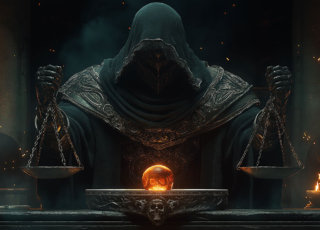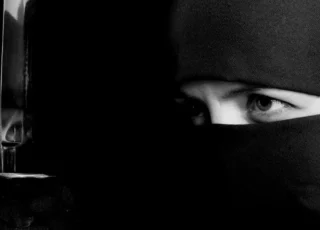Survival Horror 2025: Back in the Mainstream. Who Are the Fans, and Why Do They Want to Be Scared?
- September 25, 2025
- Michał Dębek
Survival horror is back in the spotlight. The number of releases is growing, with both new IPs and refreshed classics emerging, and the genre is gaining traction in pop culture. But the real questions are: why do players still want to be scared, and who are the fans of this genre? We examined this in our research. The answers can be found in player psychology and in the latest Try Evidence report.
→ check out the data on survival horror enthusiasts in our newest report
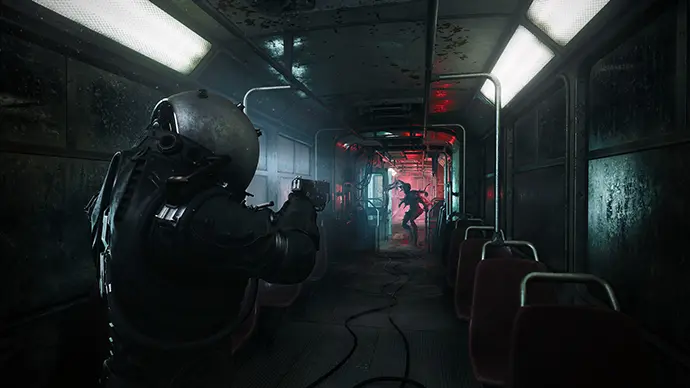
The Big Picture
Survival Horror Returns to the Mainstream
Everything indicates that players still crave fear and a sense of threat. In recent years, refreshed classics – Resident Evil 4, Dead Space, and Silent Hill 2 – received excellent reviews and sold millions of copies. On top of that came major AAA premieres like Alan Wake 2, as well as smaller but highly rated productions (Signalis, Amnesia: The Bunker, The Medium). Recently, the genre has also been represented by Cronos: The New Dawn from Bloober Team – a classic survival horror intriguingly set in an alternative, socialist-realist Nowa Huta.
Horror Builds Pop Culture
The genre is no longer limited to linear corridors. Hybrids like Sons of the Forest or Dying Light, narrative blockbusters such as The Last of Us, and cooperative experiments like The Outlast Trials show that survival horror is evolving and reaching mass markets.
Horror is also increasingly appearing outside of games. The TV adaptation of The Last of Us reached millions of viewers and won industry awards, while Resident Evil regularly returns in the form of films and series. Horror also thrives in the streaming ecosystem: the most popular “reaction videos” and horror marathons on Twitch and YouTube show that experiencing fear together with an audience is an attractive experience in itself.
The Horror Market in Numbers – Forecasts and Growth Dynamics
The broader “immersive horror” category, which includes VR and AR, was valued at about USD 8.7 billion in 2024 and is expected to grow to USD 9.8 billion in 2025, with forecasts of over USD 17 billion in 2030 (CAGR approx. 12.3%).
Almost all major games released today are available simultaneously on PlayStation, Xbox, and PC, with some also available on the Switch or VR devices. This means games built on survival, fear, and tension can now rival the popularity of mass-market action-adventure franchises. Horror is mainstream today.
Popularity of Survival Horror on Steam
For comparison, the king of the rankings – #ActionRPG – had around 1,800 releases in 2024 and a catalog of about 25,000 games, while the popular #Platformer had around 1,100 releases and 22,000 tagged titles.
Of course, Steam tags are not always precise. But even if some games are mis-tagged, this comparison still shows the significant popularity of survival horror compared to other subgenres in the gaming universe.
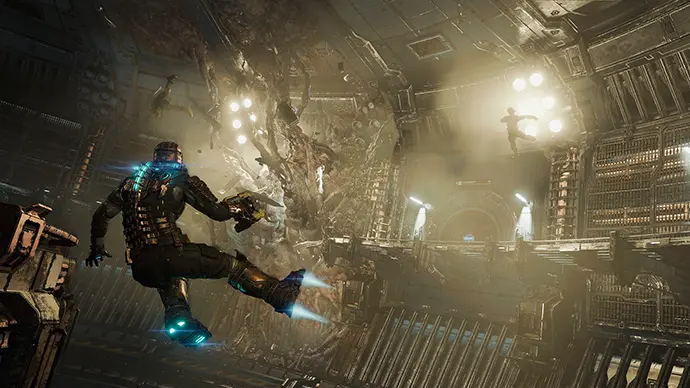
Back to Roots or a New Era of Horror? How the Genre Is Changing
After the golden age of the 1990s and the experimental period from 2000 to 2020 (from action-heavy Resident Evil entries to the wave of minimalist indie horror), the genre has regained its identity and stable foundations. Classic elements – limited resources, claustrophobia, tension – have returned, now in modern form.
Open Worlds and Hybrids – Expanding the Addressable Market
Although survival horror still features linear corridors and scripted jump scares, an increasing number of games focus on free exploration. Sons of the Forest is a hybrid of survival and horror where the player chooses their own survival strategy. Chernobylite combines horror with crafting and base-building mechanics. In Alien: Isolation, players can use full-fledged stealth mechanics. These were once rare, if present at all, in survival horror, but today they expand gameplay and redefine the genre itself.
Such an expansion of mechanics broadens the target groups and increases the addressable market, meaning the potential market size for each title. As a result, hybrid projects can be less commercially risky than classic, purely linear survival horrors.
Remakes and Nostalgia – Publishers Play It Safe
Another pillar of the revival is the remaking of classics. Resident Evil 2 (2019), Resident Evil 4 (2023), Dead Space (2023), and the excellent Silent Hill 2 (2024) show that nostalgia sells very well – provided it combines fidelity to the original with modern presentation and mechanics. Critics and players respond positively to titles that deliberately refresh proven formulas while maintaining the identity of the originals.
Narrative Experiments – More Replayability, Risk of Losing Control
Modern horror increasingly tests the boundaries between classic linearity and the demand for greater openness and replayability. Alan Wake 2 allows players to switch between Saga’s and Alan’s campaigns freely, creating a nonlinear structure with different experiences depending on the order chosen. Silent Hill 2 Remake, like the original, offers multiple endings tied to playstyle. Meanwhile, Alone in the Dark (2024) provides two campaigns with different perspectives and as many as five possible endings. In the indie space, Signalis blends classic inspirations with multiple endings.
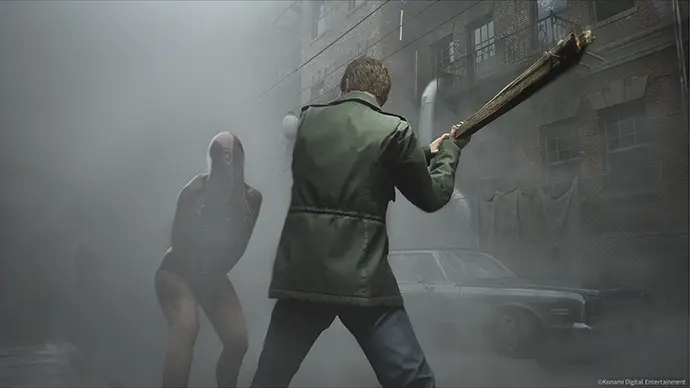
Experiments also extend to procedural design. Amnesia: The Bunker was built so that random placement of resources and monster behavior generates emergent tension. In Dead Space Remake, the “Intensity Director” dynamically controls lighting, audio, and enemy spawns, making each playthrough slightly different.
Such approaches to horror are risky. They make it harder for writers to control the rhythm of fear tightly, and in horror, player emotions are especially sensitive to breaks in immersion. But openness and variability also create opportunities for new design solutions, greater replayability, and a sense of unique experience.
Horrors as Mirrors of the Times – Closer to Today’s Audiences
Narrative and procedural experiments show that creators are seeking freshness in horror structure. At the same time, themes and content are shifting. Today’s games resonate with the anxieties of the era and the experiences of contemporary players. We saw a pandemic in The Last of Us, isolation in Amnesia: The Bunker and Still Wakes the Deep, ecological collapse in Chernobylite, and echoes of totalitarian societies and dystopias in Cronos: The New Dawn. On the symbolic level, themes of trauma and grief appeared in Alan Wake 2, Silent Hill 2 Remake, and The Medium.
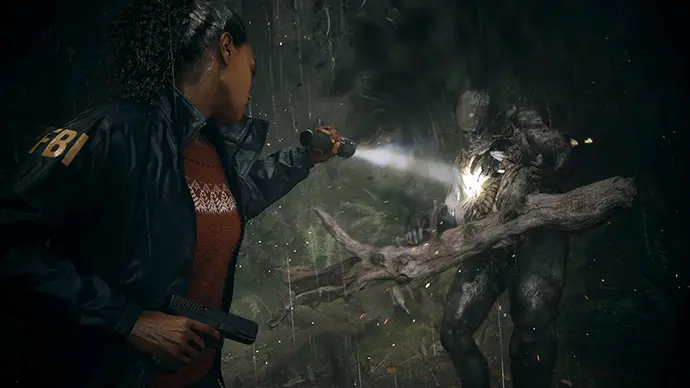
Unlike many horrors from 20–30 years ago, which served mainly as escapist entertainment, today’s games reflect collective experiences and everyday anxieties. Weaving the “fears of the era” into games can increase immersion and the weight of the experience, attracting more mature players. At the same time, it requires sensitivity. A too literal approach risks upsetting the balance between fear and entertainment.
Technology in the Service of Fear – Stronger, but Costly
Shifts in themes go hand in hand with the evolution of tools. How we tell stories about today’s fears increasingly depends on technologies that boost immersion. Super-realistic lighting (ray tracing), binaural audio, and VR hardware make fear more tangible than ever. Remakes like Layers of Fear (2023), thanks to modern lighting and volumetric effects, gained extra depth.
New technologies boost player immersion and horror’s overall impact, but they demand caution. The greater the immersion, the more visible pacing flaws become. Moreover, the high costs of these technologies do not compensate for weaknesses such as poor scripts, subpar gameplay, or a lack of coherence.
Why Do We Like Being Scared? The Psychology of Survival Horror
Players return to horror because it lets them safely test themselves in situations of great uncertainty, build a sense of agency, and experience intense emotions without real risk. This “controlled fear” is the heart of survival horror – an emotional rollercoaster that has attracted fans for decades.
In a broader perspective, player behavior is shaped by deeper motivational patterns – something we explore in more detail in our Gamer Motivation Theory (PETGaMo) framework.
Not Just “Play and Put Away”: How Horror Fans Play
As we know, survival horrors are not “one-and-done” games. They require patience, exploration, and trial and error – and that’s exactly what draws their fans. Genre enthusiasts engage more deeply than the average player: they willingly return to completed titles, searching for alternative endings, hidden secrets, or new narrative paths. Popular are New Game+ challenges, extra modes, and achievement hunting.
Average playtime in titles like Resident Evil 4 Remake or Resident Evil Village often reaches dozens of hours, even though the main campaign can be finished much faster. This proves that fans of survival horror want to “squeeze the maximum” out of the game – exploring every corner, testing mechanics, and challenging themselves in the toughest conditions.
From the perspective of developers and publishers, significant potential replayability is a natural space for adding extra modes, multiple endings, or DLC– elements that can extend a game’s lifecycle and boost monetization.
Controlled Uncertainty: The Secret of Enjoying Fear
Survival horror players are not looking for pure suffering or paralyzing terror. What truly attracts them is controlled uncertainty– the chance to enter a situation where you don’t know everything, but you know enough to try. In psychology, “fear of the unknown” is described as one of the foundations of human anxiety.
A well-designed survival horror tames this fear in safe conditions. Skilled designers deliberately play on this fine line. They restrict information, make it ambiguous, blend predictability with chaos. They use sound and light as instruments of emotional manipulation: creaking floorboards, sudden dimming of lamps, echoes of footsteps in empty hallways. All to trigger vigilance in the player and whisper: “I don’t know what might jump out from around the corner…”
This mixture of uncertainty and control makes survival horror so absorbing. The player knows the threat is real in the game world, but at the same time is aware they can put down the controller at any moment.
Recreational Fear: How Designers Balance Tension
Fear in games works like seasoning– in the right dose it delights, in excess it ruins the taste. Too little tension brings boredom; too much leads to frustration and overload. Psychology describes this with the inverted U-curve: the greatest pleasure, known as “recreational fear,” appears at optimal arousal, right in the middle.
The best survival horror designers understand this perfectly. They consciously interweave “empty” corridors with sudden spikes, narrow the player’s field of view, mix predictability with chaos. Encounters with enemies are unavoidable and frequent, but not excessive. The player feels a constant presence of threat but is not bombarded nonstop. This way horror “breathes” and doesn’t numb. After a climax comes relief: tension drops, pleasure rises, and the player is encouraged toward the next confrontation.
Skillful dosing of tension improves player retention. Horror built from sequences of “inverted Us” is more satisfying and keeps players engaged longer than a game that constantly bombards them with stimuli.
Benign Masochism: Why We Enjoy “Safe Pain”
One of the pillars of survival horror’s appeal is the ability to experience danger in controlled conditions. Games create “emotional playgrounds”: save rooms, safe zones, and pause options. In these genuinely safe conditions, the brain interprets unpleasant stimuli as satisfaction, in a phenomenon known as benign masochism.
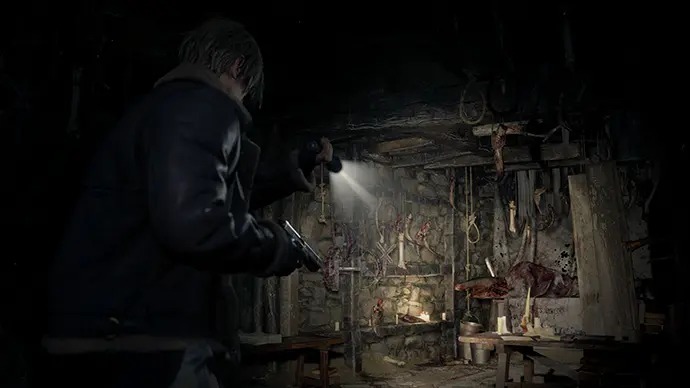
It’s like spicy food: it burns, but you know nothing bad will happen. Games work the same way– we trick the body into enjoying the emotional rollercoaster. The best horror directors skillfully exploit this.
Well-designed “safe pains” prolong player engagement. Creating the illusion of safety and then suddenly breaking it is a proven way to keep emotions fresh throughout the game.
The Biology of Fear: A Cocktail in the Player’s Brain
Behind all these mechanisms lies neurochemistry. Fear triggers the release of adrenaline and noradrenaline, which prepares the body to fight or flee. In the safe context of a game, this reaction excites instead of paralyzing. Dopamine, the reward neurotransmitter, ensures euphoria after fear. Endorphins help ease tension, and serotonin helps stabilize mood. That’s why, after a jump scare, we often laugh in relief. The bigger the contrast between tension and safety, the stronger the “wow effect.”
Biological mechanisms reward the rhythm of contrast– tension and relief must alternate. Developers who skillfully control emotional tempo create experiences that stay longer in memory and are more often recommended by players to others.
Different Fear Thresholds: Not Everyone Likes the Same Level
Of course, not all players want the same level of stress. Some have a greater appetite for intensity and higher so-called morbid curiosity – an attraction to dark, boundary-pushing themes. For them, developers create no-HUD modes, permadeath, or extreme resource scarcity. Others prefer moderate tension (though still higher than average for games), with more predictable safe zones.
These differences stem from biology – dopamine regulation – and individual thresholds of arousal. These differences in appetite for fear line up with distinct player motivations, from curiosity to mastery—see how we break them down in the Gamer Motivation Theory (PETGaMo) article.
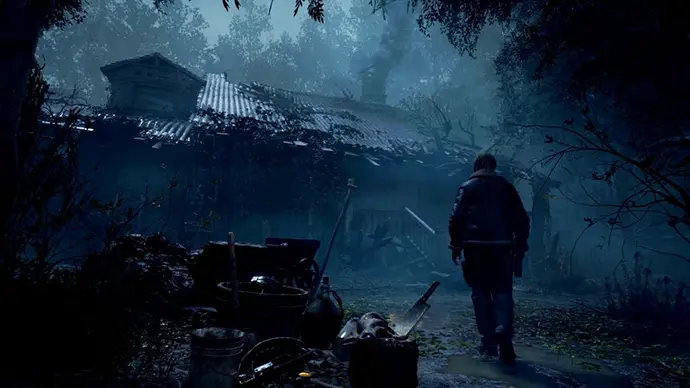
Players of other genres might find this surprising. Interestingly, Try Evidence research shows that similar needs also appear in other niches, such as stealth.
The Psychological Bonus: Agency, Competence, and Emotion Regulation
Survival horrors attract players not only with emotions but also with opportunities to build agency. The player learns to read the world– listening to ambient sounds, analyzing shifts in audio, observing light, and even subtle movements in the environment. They optimize decisions: how to manage resources, which route to take, and how to move unseen. The stronger the sense of I can handle this, as they progress deeper into the game world, the greater the satisfaction of overcoming hostile environments.
This is why New Game+ modes and higher difficulty settings are popular in this niche. Not only for hardcore players– but also for mid-core players who want to close the learning loop: fear – attempt – competence – pleasure from mastering the game world (and even, symbolically, from controlling it).
But this is more than just entertainment. Research conducted during the COVID-19 pandemic revealed that horror fans exhibited greater stress resilience and better preparedness for crises. Games allow them to “rehearse chaos” safely when the world is collapsing (or already has).
Horror, especially in its survival form, is also a way to tame existential fear. As Stephen King wrote: “We make up horrors to help us cope with the real ones.” Horror provides a visible structure to the unknown and allows us to symbolically overcome what we fear most.
Creators who know how to design games that strengthen agency and competence build player loyalty. If they succeed in creating experiences that support emotion regulation, they can expect high player ratings and word-of-mouth promotion– and as we know, that is one of the most effective forms of marketing today.
Who Are the Fans of Survival Horror and What Drives Them? [Try Evidence Report]
At Try Evidence, we have been studying different genre niches and player segments for years. In recent months, we once again focused on fans of survival horror.
From our latest report, you will learn:
- Who today’s survival horror fans are – age, gender, level of “hardcoreness.”
- Why they choose this genre – what motivations are key and how they differ from other players.
- Which other genres do they like, and which mechanics do they value most?
- What frustrates them in games and what elements they would like changed.
- How they discover new titles and what influences their purchase decisions.
- Whether region of residence differentiates preferences – we compared players from the US, UK, Germany, France, and South Korea.
If you want to understand what drives players who love to be scared– and use these insights in game design, marketing, or publishing strategy– sign up for the free report below.
Designing games? The report will show you which mechanics and themes truly resonate with survival horror fans.
A publisher or investor? The report will help you assess the potential of this niche—which development paths are less risky, which mechanics attract the most engaged players, and what cultural differences are worth factoring in when planning launches across different markets.
If you want to see how survival horror fits into the bigger picture of gamer psychology, check out our Gamer Motivation Theory (PETGaMO) analysis.





